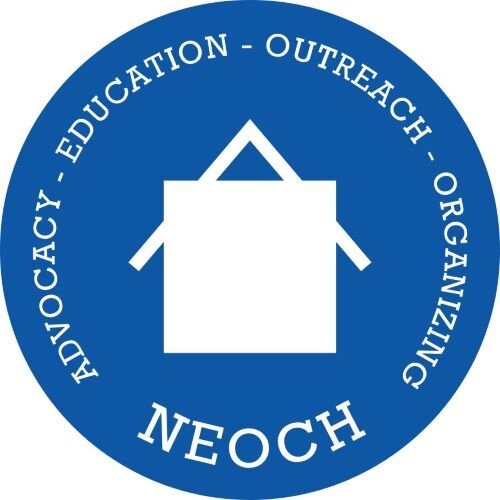Empowerment is Key to Reversing Homelessness
by Angelo Anderson
The mission of the Northeast Ohio Coalition for the Homeless (NEOCH) entails empowering the homeless. Empowerment is a useful word when explaining what NEOCH hopes to accomplish, for it is only through forming a solid base, only by standing up, only by registering to vote and coming out in mass that the homeless and poor ever stand a chance of making a difference in their own lives.
How? How? How do we get across to those most affected by cuts in social programs the importance of being counted? The following statistics, prepared by the National Coalition for the Homeless and NEOCH, are based on 11,000 clients registered in homeless shelters during the 1994 Census. Consider the fact that there are nearly twice that number of people who don’t come in or stay in shelters, it has been estimated that the number of homeless has doubled since 1990. By using the shelter registration system as a base for determining the number of homeless people, NEOCH estimates that there are 22,000 homeless people in Cuyahoga County each year. In Ohio alone, there is an estimated 140,000 homeless population and this figure can be placed on the rolls of the national estimate of 13.5 million people living in shelters or on the streets in their lifetime.
If these numbers seem amazing, one should take a look at the next set of cuts to take place this year and add to the equation the number of potential clients that will be added to the rolls. This is the new federal and state welfare reform law. NEOCH sees the number of homeless increasing dramatically. The following breakdown of statistics uses numbers from the Department of Human Services:
Food stamp cuts will hit some 12,800 people in Cuyahoga County. These are able-bodied men and women between the ages of 18 and 49. But the largest number of people affected will be the children who receive Aid for Dependent Children (AFDC). A program called Temporary Assistance For Needy Families (TANF) will take its place. Individuals who meet existing eligibility criteria for AFDC will no longer automatically be entitled to cash benefits. While the federal government has attached some requirements, states will have broad discretion for determining eligibility and spending of their TANF grant. Adults who receive aid under TANF will be required to participate in work activities after receiving aid for 24 months (with some exceptions). However, the state definition of work is more liberal than federal guidelines. This includes activities such as college education. By fiscal year 2002, the government will require that 50% of the families participate in work.
Time limits for receiving aid will now be in place. 30,000 vouchers have been allocated by the appropriations committee to assist these families. Clearly, 40,000 families face displacement and/or homelessness. Just some of the properties at risk here in Cleveland ore Rainbow place I and II, Koimonia Village and the Four Hopes.
Locally, CMHA has had $13 million cut in funding for this year, and there is expected to be similar decreases in the future to help meet a balanced budget by 2002.
The extremely poor and homeless will no longer be given a preference, as CMHA moves to fill 60% of its population up to a level in which they contribute around $200.00 per month rent. This is in a move to meet budget constraints over the next five years.
Affordable housing as we know it will no longer exist. Activists find this to be a very frightening and bleak future for poor people. Will the homeless roles rise? Definitely yes!
But you can help to stop the way our elected officials always try to balance the budget on the backs of the poor. You can come out and join NEOCH with marches in protest of staged rallies.
On March 1, 1997 at Cleveland State University, NEOCH and other agencies assembled to march t the county welfare building. One hundred ten people came to the rally, only five of these people were people who would be affected by the cuts. The others were advocates and concerned citizens. Out of 55 people that walked to the Virgil Brown Building, only two customers of the system remained. Why?
On March 12, 1997, NEOCH and other agencies chartered two buses to go to Columbus for a rally protesting the cut to the welfare program. There was room for 90 people. One hundred twenty people agreed to show up, but only 61 actually took the trip.
This will not do. We must take a stand. We must know that we can make a difference, but only by standing up and being counted. Each year in November, we have a chance to locally be heard and every four years we have a chance to vote and be counted nationally. Only by coming together at the polls can the poor and the homeless stand to make a difference in the way poor people are treated in this country. Remember the numbers of homeless in the county are estimated at around 20,000. We must remember that number adds up to 20,000 votes. You will be heard. 13.5 million across the country have been homeless at some time in their life. That adds up to a lot of votes. You will be heard.
Take a good look at what is being done. It is time to stand up. It is time to make some noise. It is time, before it is too late.
Copyright NEOCH and the Homeless Grapevine published March 1997-April 1997 Issue 20
